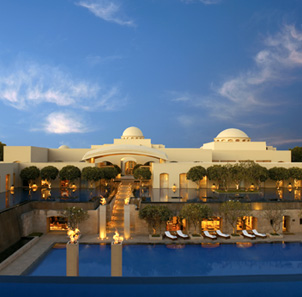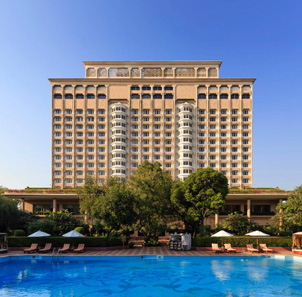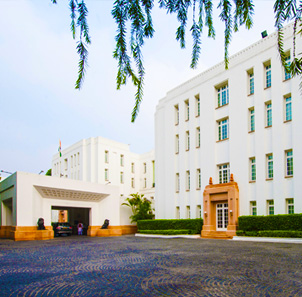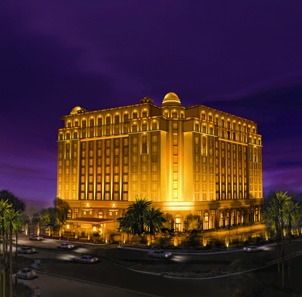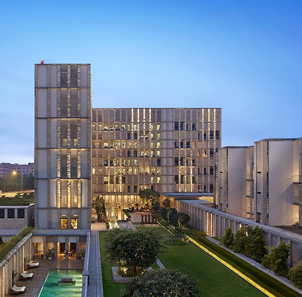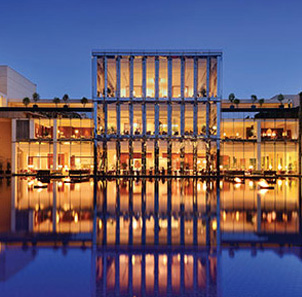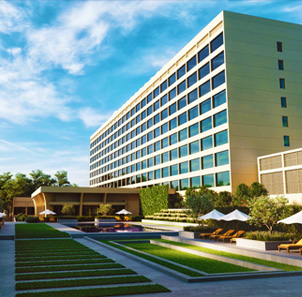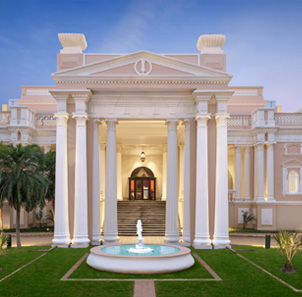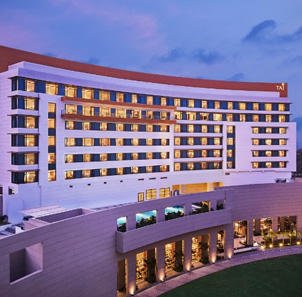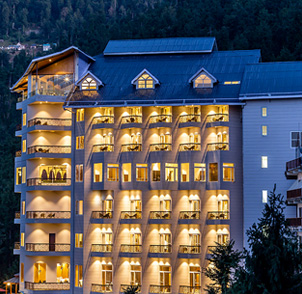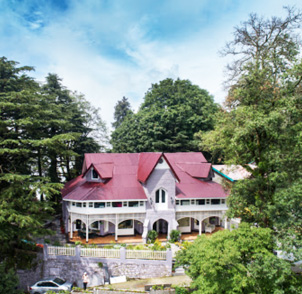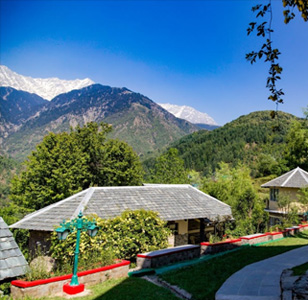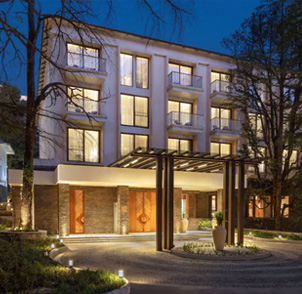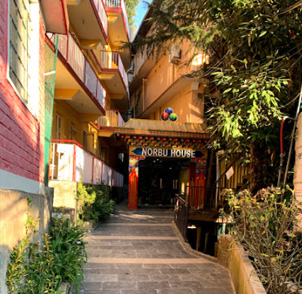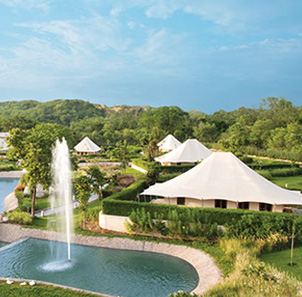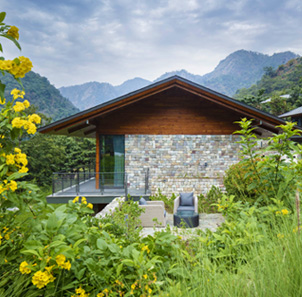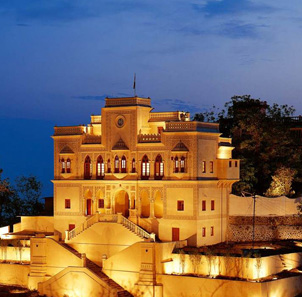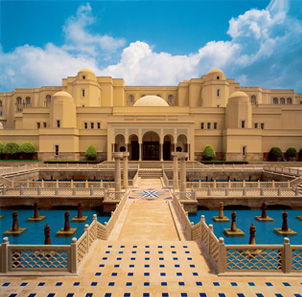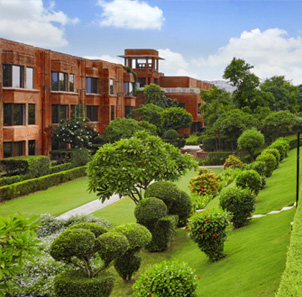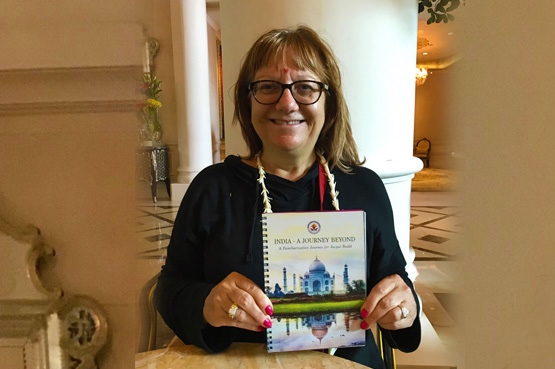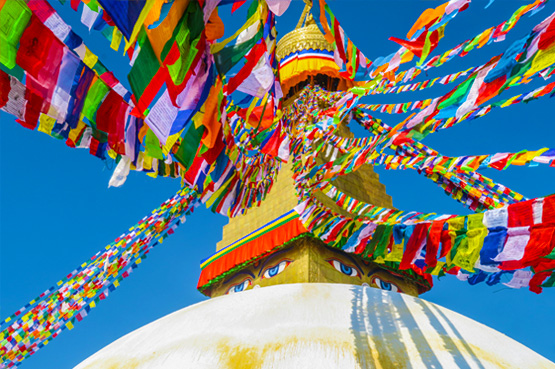Take the road to peace
The journey through India is where you discover yourself. From the heavenly views to eclectic faiths, this country is a lovely mix of spirituality and love.
Here is an itinerary where you will witness two major faiths and their purity permeating the air. Soak in the serene shimmering splendour of the Golden Temple in Amritsar as you make your way through the narrow streets to reach this iconic place. The most holy site for the Sikhs, embrace the tranquil vibe and the humble chants from the holy book.
Next up is Dharamsala, the seat of His Holiness Dalai Lama nestled between deodar trees and granite mountains. McLeodganj the enchanting hill station is the headquarters and also known as Mini Tibet. The charming monasteries, quaint cafes and abundance of natural beauty just pull you into its quiet aura.
Join us for this spectacular tour to search for joy within!
Journey
- Day 1 Arrive Delhi
- Day 2 Delhi
- Day 3 Delhi - Amritsar
- Day 4 Amritsar - Dalhousie (5-hour drive)
- Day 5 Dalhousie - Dharamsala (6-hour drive)
- Day 6 Dharamsala
- Day 7 Dharamsala - Taragarh - Chandigarh
- Day 8 Chandigarh
- Day 9 Chandigarh - Rishikesh
- Day 10 Rishikesh
- Day 11 Rishikesh
- Day 12 Rishikesh - Haridwar
- Day 13 Haridwar - Agra
- Day 14 Agra
- Day 15 Agra - Delhi
- Day 16 Delhi - Departure
Detailed Itinerary
DAY 1Arrive Delhi
Our representative welcomes you to India, and as you transfer to your hotel, this fascinating capital city reveals hints of what it holds in store for you. Your boutique hotel is in the heart of New Delhi in famous Connaught Place
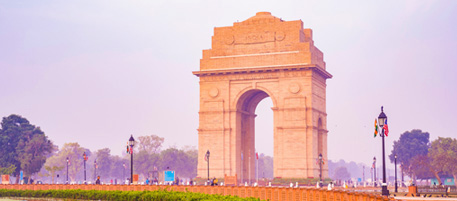
DAY 2Delhi
It’s ancient, it’s modern, it’s everything in one – seven historic cities spanning time from the 11th to the 20th centuries, reflecting the grandeur and glory of yesterday. This morning, begin exploring the city after breakfast, starting in Old Delhi, stopping first at the Red Fort, an opulent reminder of the Mughal Empire. Continue to other must-see places: Jama Masjid, India’s largest mosque; Raj Ghat, the memorial site of the Mahatma Gandhi, and Chandni Chowk, the ancient and bustling market that comes alive as the day’s trading begins. After lunch, tour New Delhi, designed and built by the British in the 1920's, and known for its boulevards, government buildings and great swaths of greenery and gardens. Your drive takes you along the ceremonial avenue, Rajpath, past the imposing India Gate and Parliament House, as well as two monuments from Delhi’s past, which you will visit.
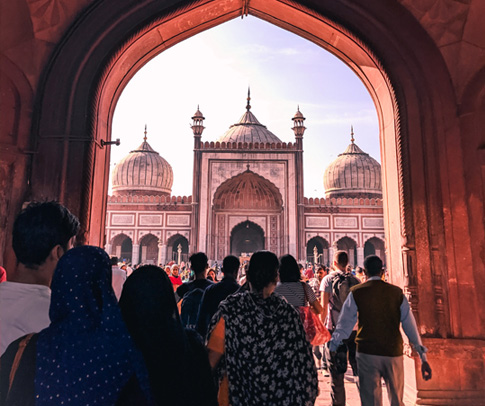
DAY 3Delhi - Amritsar
You’ll fly this morning to Amritsar, a center for the Sikh faith, located in northwestern India’s Punjab state, about 15 miles (25 kms) from the border with Pakistan. It was here in 1919 that a horrific massacre of unarmed demonstrators by British troops inspired Gandhi’s Non-Cooperation Movement. This evening, travel through Amritsar’s fertile valley to Wagah Border, an army outpost and crossing-point between India and Pakistan, to witness the “Beating the Retreat” ceremony in which soldiers from each country, with their fantastical headgear, perform speed-marching drills before lowering the flags and locking the gates for the night. Return to Amritsar and visit the breathtaking 16th century Golden Temple, a delight at sunset when the domes are reflected in the purifying waters of the Amritsar Sarovar. Remove your shoes, cover your head, wash your feet and enter this resplendent temple. If you’re hungry, there is free food for all.
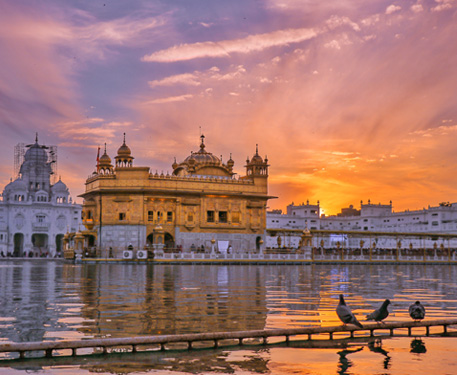
DAY 4Amritsar - Dalhousie (5-hour drive)
Oh, India’s heat! The British had a love-hate relationship with it, and in the 1854, Lord Dalhousie, Punjab’s Governor General, established a sanitorium and summer retreat here for troops and bureaucrats seeking a cool summer escape. Hilly and lush, with winding roads and scenic vistas, Dalhousie is a beautiful hill station – one of 80 such hill stations built in just 30 years - in Himachal Pradesh, with an average elevation of 6,410 feet (1,954m). The town sits the foot of the Dhauladhars, with outstanding views in all directions: To the north, the snow peaks of Kashmir’s Pir Panjal; to the south, the valleys of Punjab; in the distance, the Beas and Chenab rivers. Built on five hills, Dalhousie is dotted with picturesque, tin-roofed, half-timbered houses and still retains its raj ambience, on view during a walking tour today that includes a later visit to scenic Panj Pullah.
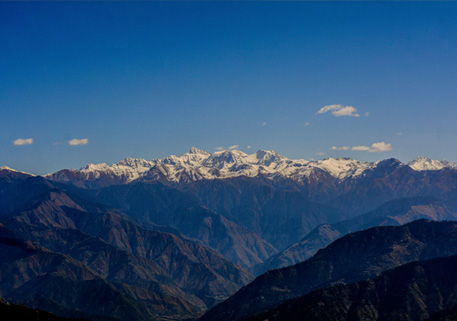
DAY 5Dalhousie - Dharamsala (6-hour drive)
The breathtaking Pir Panjal range of the Central Himalayas provides scenic views on this morning’s drive, descending through the dense deodar forests of Kalatop, and then over the terraced hillsides of Khajjiar en-route to Dharamsala. Divided into two distinct districts, the city is comprised of Lower Dharamsala, a typical, small Indian town; and Upper Dharamsala (McLeod Gang), an 1848 British hill station. Now, of course, it is best known as the home of the Dalai Lama and the Tibetan government-in-exile. Your hotel nestles amid pine and oak in view of the rock-faced Dhaulardhar range, a magnet for pilgrims from around the globe.
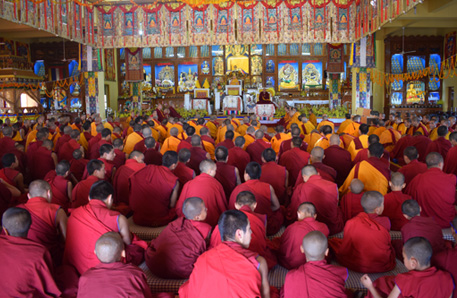
DAY 6Dharamsala
Crisp morning air, vertical slopes, peaceful quiet: Let the bliss of it sink in as you begin a morning walking tour - through Bhagsu Nag and Dharamkot villages; to a Buddhist stupa set amid forests of deodar trees; to caves where old Tibetan monks meditate; to overlooks with heart-stopping views of the valley. Two hours pass with little notice, and then you arrive at Naddi village, feeling the warmth of effort, and are rewarded with breathtaking views of the Dhauladhars. After lunch, visit the Namgyal Monastery; the adjacent Tibet Museum; and Tsug Lakhang, the Dalai Lama’s temple. Devotees will perform a kora, a clockwise circumnabulation of the temple. You can, too, imprinting your own little history on this sacred ground.
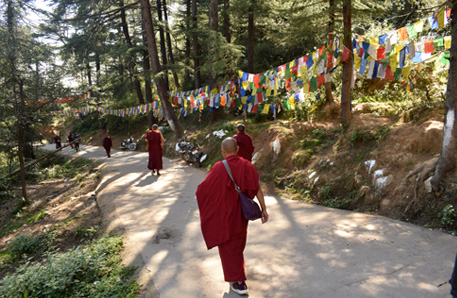
DAY 7Dharamsala - Taragarh - Chandigarh
City life is calling, but the change is gentle as you drive after breakfast to Chandigarh. On the way, pass through Taragarh, encompassed by towering Dhauladhar peaks and famous for its scenic tea gardens, lush paddies and rushing rivers. The area is also known for its clay pottery and for international paragliding and hang-gliding competitions. On arrival, check in at the hotel.
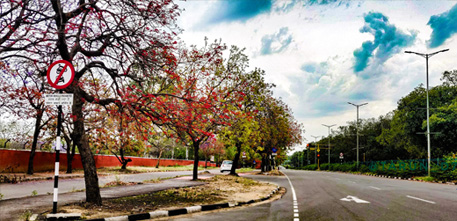
DAY 8Chandigarh
Ready for a change of pace place? Chandigarh, named for the Goddess Chandi, is just that: a sophisticated and modern city designed in the early 1950s by the French architect Edouard ‘Le Corbusier’ Jeanneret. Still, with the resplendent sky and mountain backdrop, it has that “definitely not like home” feel about it as you set out to see the sights: Nek Chand’s Rock Garden, Sukhana Lake with its joggers and rowers, and City Center, in Sector 17 (one of 47 self-contained areas), where you’ll find great shopping and evidence of Chandigar’s high per-capita income. Take a rickshaw back to your hotel, immersed in Le Corbusier’s vision of Chandigarh as a city of “sun, space, and verdure.”
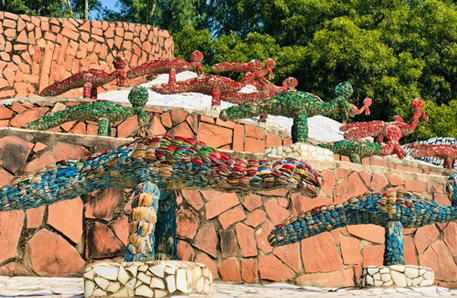
DAY 9Chandigarh - Rishikesh
Where the Ganges River (Ganga) emerges from the Himalayas, you’ll find the picturesque town of Rishikesh, first made famous to westerners when the Beatles came here in the 1960s to visit the Maharishi Mahesh Yogi’s ashram, long-since closed. You’ll drive here after breakfast, check into your hotel, and have the balance of the day free to explore the city where yoga was born. Long known as a spiritual center, Rishikesh offers numerous opportunities for meditation and ayurvedic therapy – but it is also a great place for white-water rafting and sighting food-thieving monkeys.
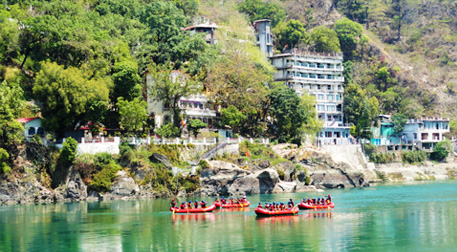
DAY 10Rishikesh
A morning yoga class gets you off to a mellow start for a relaxing day in the holy city of Rishikesh. If you’ve been tempted to have a cold dip in the Ganges, this might be the place, since there’s a private ghat right outside the hotel where you can absorb the river’s purported healing energy. An Ayurvedic lunch might be nice, too. Without a bit of irony we say: Have a nice day.
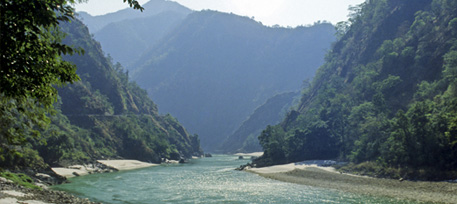
DAY 11Rishikesh
As the sun rises over the Himalayas, the city wakes, pilgrims arrive at the ghats, yogis begin their meditations, and you are off to discover Rishikesh city: First, Bharat Mandir, the oldest temple here, dating to the 12th century, and situated in the heart of the old town, on the banks of the Ganges. Continue on past beautiful, rock-strewn sandy beaches to the Ram Jhula and Laxman Jhula areas, both famous for their temples. Before leaving Rishikesh, you may want to shop for religious tokens, which are plentiful, or for incense, bronze Shiva statues and clothing.
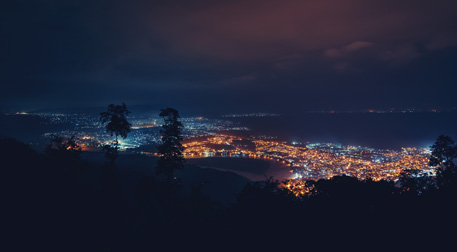
DAY 12Rishikesh - Haridwar
“Gateway to the abode of the Gods,” is the literal meaning of Haridwar, where the Ganges tilts and rumbles from the foothills to begin its long and holy journey south. This is also a main crossroads for pilgrims of all kinds, where the scene is dominated the gleaming white shikhara of Mansa Devi temple, which can be reached by cable car. After lunch, visit the riverside promenade at Har-ki-Pairi, the principal ghat, where a moving and spectacular ceremony, Ganga Arati, takes place each day at dusk, sometimes drawing thousands to the bridges and islands for this devotion to the goddess Ganga. An island with a clock tower provides a good view as lights are set afloat on the water, priests swing lighted torches and music and gongs boom in the background.
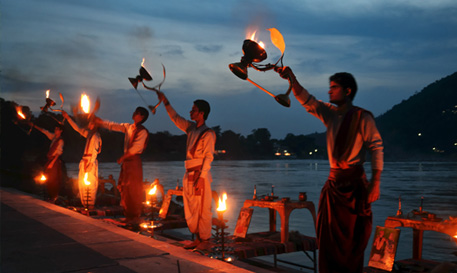
DAY 13Haridwar - Agra
Transfer to the railway station this morning for the train to Agra, the city of the fabled mausoleum, Taj Mahal, one of the Seven Wonders of the World. After check-in at your hotel, the balance of the day is free for rest or exploration of the city, which was once the capital of the Moghul Empire, and situated on the banks of the River Yamuna.
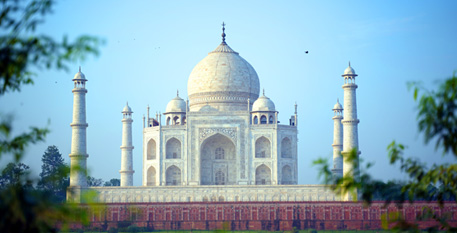
DAY 14Agra
Set out this morning for a visit to the incomparable Taj Mahal. Begun in 1632, the Taj took 22 years to complete and follows an Islamic layout representing paradise. It was erected by Shah Jahan in memory of his favorite wife, Queen Mumtaz Mahal, who died while bearing their 14th child. Prepare to be mesmerized by this perfect example of Mughal architecture. Although the Taj eclipses all other structures, Agra has other delights in store, including the amazing Agra Fort, built in 1565 by Emperor Akbar, and one of our destinations this afternoon.
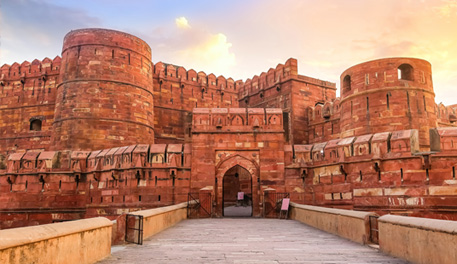
DAY 15Agra - Delhi
After breakfast, depart for Delhi with a stop en route at Fatehpur Sikri, built by Emperor Akbar, completed in 1574, and abandoned for lack of water, it is said, a mere 14 years later. Of particular interest are its red stone mosques, courtyards and the palace where Akbar reputedly played chess using slave girls as pawns. You will then continue your journey to Delhi, where a day room has been reserved for your comfort. Later tonight, transfer to the international airport for your connecting flight to America.
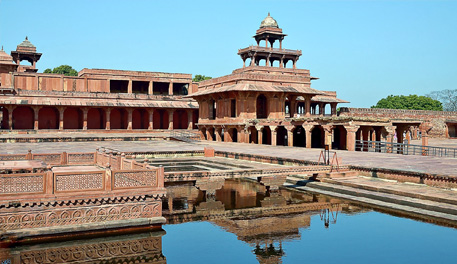
DAY 16Delhi - Departure
Early this morning, board your flight home to the United States.


